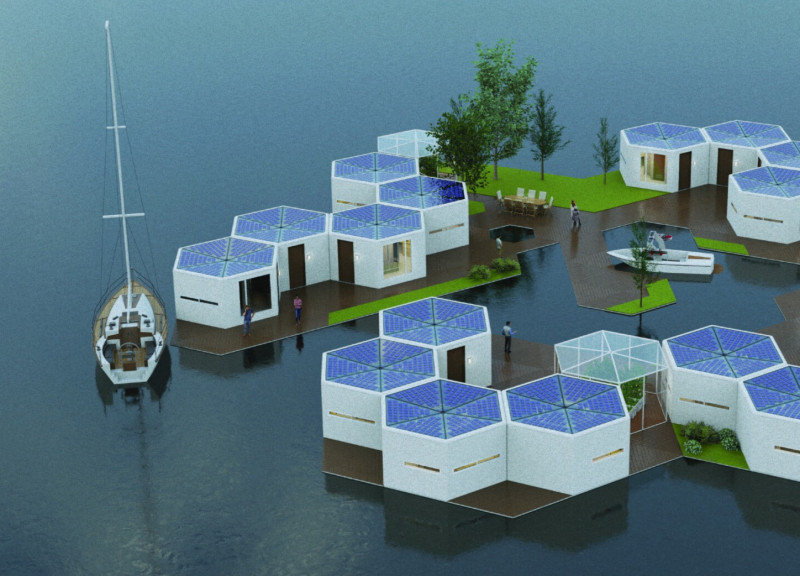5 key facts about this project
This architecture project stands as a testament to thoughtful planning and execution, characterized by an innovative use of materials and a clear expression of its intended function. The primary goal of the design is to create a versatile environment that caters to various activities, emphasizing a fluid interaction between indoor and outdoor spaces. By fostering connectivity with nature, the design encourages a sense of community and collaboration among its users.
Key elements of the design include carefully curated material choices, which not only enhance the visual appeal but also contribute to the building’s sustainability. Materials such as concrete, glass, steel, and timber have been employed strategically throughout the structure. Concrete provides durability and longevity, while glass allows for natural light to permeate the interiors, blurring the lines between inside and outside. Steel elements add structural integrity and contemporary flair, while timber infuses warmth and texture into the spaces, creating a welcoming atmosphere.
The layout of the project is particularly noteworthy, featuring an open-plan configuration that promotes flexibility. This approach not only maximizes the utility of the space but also facilitates a dynamic flow of movement, accommodating various activities and events. This adaptability is further underscored by the incorporation of modular furniture and movable partition walls, enabling users to reconfigure the environment according to their needs.
Landscaping plays a significant role in the design, with outdoor areas thoughtfully integrated into the overall concept. The incorporation of greenery not only enhances the aesthetic quality of the surroundings but also promotes ecological balance. This interaction with nature is intentionally designed to create spaces for relaxation and socialization, reinforcing the project’s focus on community engagement.
A unique aspect of this architectural design is its emphasis on sustainability. Energy-efficient systems and eco-friendly materials were prioritized to minimize the environmental footprint. Natural ventilation, rainwater harvesting systems, and solar panels may have been integrated into the building's infrastructure, further aligning with contemporary architectural trends that advocate for responsible design.
The architectural plans and sections clearly depict a well-thought-out spatial organization, highlighting the relationships between different functional areas. Each section serves to illustrate how the building will operate in harmony with its users, while also addressing practical concerns such as accessibility and circulation. These architectural designs are critical for understanding the vision behind the project, revealing how each aspect has been meticulously planned to enhance user experience.
The design also delves into innovative architectural ideas, offering solutions that cater not only to aesthetic values but also to the practicalities of everyday use. The application of biophilic design principles is evident, with features that connect occupants to the natural environment, promoting well-being and productivity.
In examining this project, one can appreciate how the balance of aesthetic appeal, functionality, and sustainability reflects a responsible approach to contemporary architecture. The attention to detail in the design—whether through the materials chosen or the spatial arrangements—demonstrates a comprehensive understanding of the user experience.
For those interested in exploring the project in depth, a review of its architectural plans, sections, and detailed designs will provide further insights into its unique qualities and thought processes behind its conception. Engaging with these elements will reveal the full extent of the design's intention and its potential to positively affect its community and environment.


























